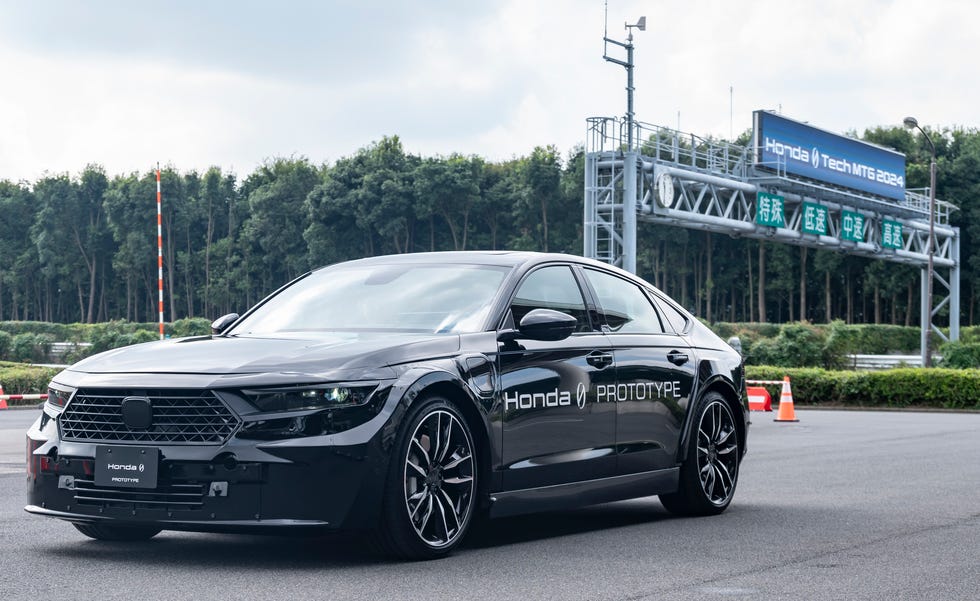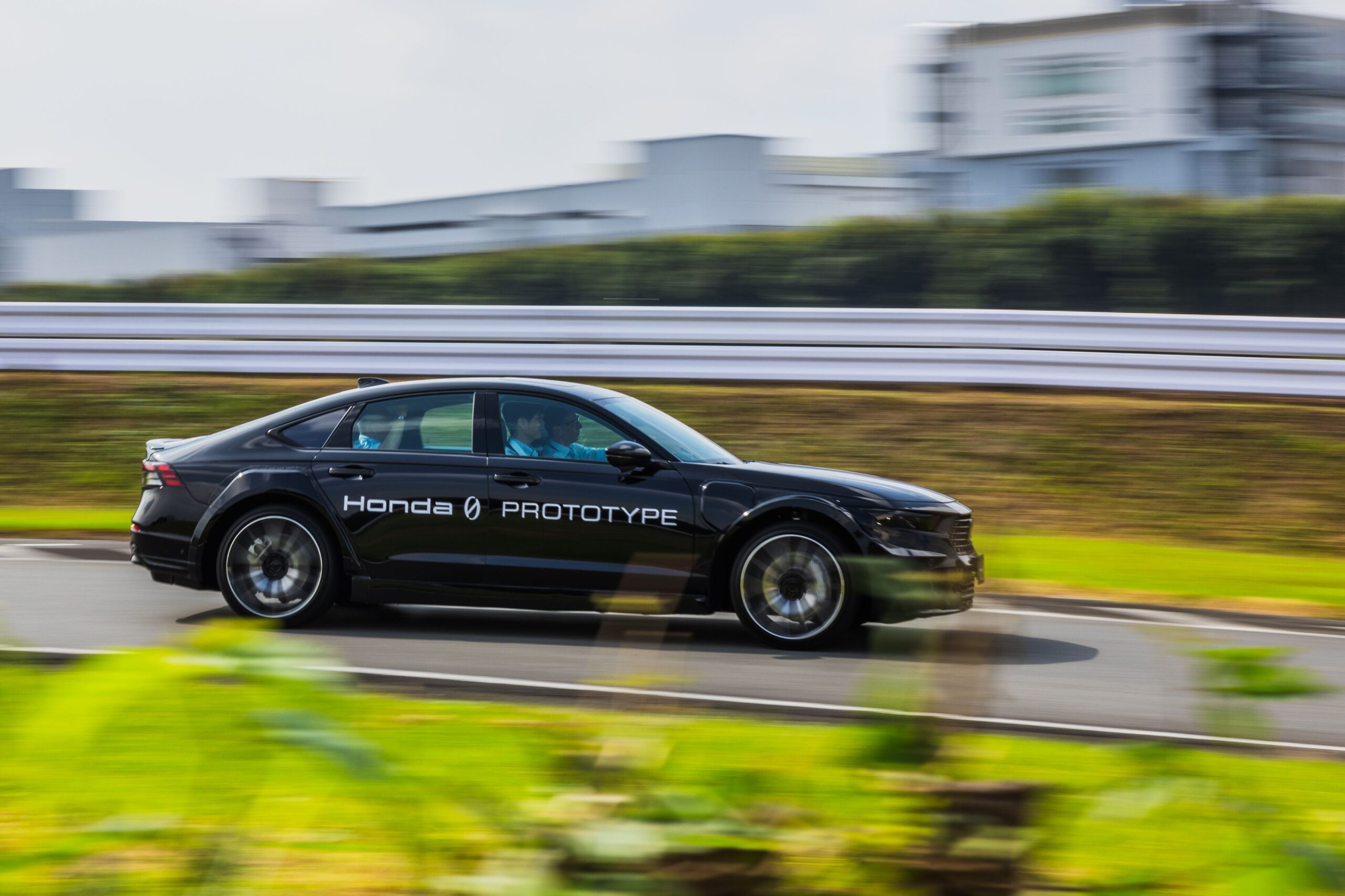The Future of Honda’s 0 Series EV: Insights from a Prototype Test Drive
- At a media event in Japan, we drove a prototype version of Honda’s 0 Series EV and learned more details about the production version of the Saloon concept.
- The 0 Series felt nimble around the short track, thanks in part to a thin, light battery pack and compact electric motors mounted low in the vehicle.
- The first car in the 0 Series lineup will arrive in 2026, with Honda announcing that it will show a more production-ready car at CES in January 2025.
Despite being a pioneer in hybrid technology in the early 2000s with the aerodynamic two-door Insight, Honda has been slow to commit to fully electric vehicles. Its efforts so far have been limited to converted gas cars such as the Fit EV or the Clarity, offered with hybrid, electric, and fuel-cell powertrains. Even its first dedicated mainstream EV for America, the Prologue, utilizes General Motors’ Ultium battery platform instead of Honda-developed technology and is built by GM.
However, in two years, Honda will show its hand. The automaker unveiled two concepts at CES 2024, and one of them, the Saloon concept, will morph into the first production car in Honda’s 0 Series of EVs in 2026. At a media event in Japan, the company revealed new details about the Saloon production car and, at its R&D facility in Tochigi, we took a brief test drive in a prototype 0 Series car.
An Unorthodox Design

The Saloon concept looks impossibly low and sleek, with a one-box wedge shape. Therefore, it was assumed that it would adopt more traditional proportions for production. However, it seems Honda is sticking with the futuristic design, stating that the EV will remain “fairly close” to the concept while detailing developments that will allow for the streamlined silhouette.
Honda calls its philosophy for EVs “Thin, Light, and Wise.” The production car’s “original” design will feature a low overall height and short overhangs. The two key components are a new, thinner-than-typical battery pack and a compact “e-axle” housing the inverter and motor. Importantly, Honda claims the inverter is 40 percent smaller than those of rival companies without specifying which competitors, allowing it to minimize the e-axle’s footprint.

The aluminum battery case will be 6 percent thinner than competitors’, thanks to two new production technologies: megacasting and 3D friction stir welding. Consequently, the packaging innovations will allow Honda to implement the concept’s low roof while still providing adequate cabin space. This design will allow for a roofline lower than 55.1 inches, which is two inches shy of the current Accord’s height.
Driving the Prototype
While the prototype featured a familiar shape, the platform underneath imparted the car with a sprightly demeanor. Honda promises athletic driving dynamics for its 0 Series vehicles, with the positioning of the battery and e-axle keeping the center of gravity low. The simplified aluminum body structure sheds a claimed 220 pounds compared to Honda’s earlier EVs—presumably meaning the Clarity—and Honda removed a crossmember between the front wheels to lower the hood. Importantly, the body structure will flex to control load on the tires during cornering.

Our short test drive—three laps around a roughly one-kilometer handling course—showed the 0 Series prototype as nimble. Though the sedan accelerated steadily and responsively, it didn’t deliver the face-melting punch of other EVs. Honda did not reveal the prototype’s output, but showcased e-axle configurations in 241-hp and 67-hp forms and hinted at a variety of rear- and all-wheel-drive setups. The model we drove featured all-wheel drive.
Moreover, Honda indicated that the 67-hp unit could be featured on the rear axle of future hybrids. The prototype lacked the steer-by-wire system that will be on the final production model, which limited our ability to assess the steering feel directly. Nevertheless, the front end felt sharp and turned with confidence.
While navigating corners, body roll was minimal, and the prototype felt less hefty than other EVs, behaving more like a gas-powered vehicle than anticipated. The car traversed an irregular pavement section with ease and softly navigated a small speed bump with minimal disruption. Upon entering the straightaway, we pushed the prototype, experiencing little understeer despite some tire squeal.

Additionally, Honda’s 0 Series will incorporate active aerodynamics, with a front aero deflector that automatically deploys based on speed and other conditions. When lowered, the deflector aims to reduce drag. Honda particularly designed this system for bulkier vehicles with higher ride heights, like SUVs. Notably, the aero feature is projected to offer an extra six miles of range on the Saloon and enhance downforce for improved straight-line stability. While the track wasn’t long enough to test high speeds, the prototype felt stable up to 70 mph.
What to Expect from the 0 Series
The battery case will house lithium-ion pouch cells developed through a joint venture with LG. Due to its thinner design, more cells can be packed in. Honda is targeting an EPA range of around 300 miles, which, frankly, may be lower than what is expected for a “next-generation” EV. Nevertheless, Honda aims to limit battery degradation to no more than 10 percent over a decade of use, relying on insights gained from analyzing the driving data of five million Hondas, mainly hybrids.

The production version of the Saloon concept will lead the 0 Series lineup and be positioned as a premium vehicle by Honda. Consequently, it is expected to carry a notably higher price than an Accord. By 2030, seven 0 Series models will be offered worldwide across various segments.
We will gain more insights soon. Honda plans to unveil a new 0 Series model at CES 2025 in January, describing it as “the embodiment in product form of the technologies and electrification concept” introduced at the tech meeting. Honda is finally focusing on developing a well-rounded EV, and while our test drive was brief, it leaves us hopeful that Honda’s 0 Series will be unique, enjoyable to drive, and practical.
Caleb Miller
Associate News Editor
Caleb Miller began blogging about cars at 13 years old, and he realized his dream of writing for a car magazine after graduating from Carnegie Mellon University and joining the Car and Driver team. He loves quirky and obscure autos and aims to one day own something as unique as a Nissan S-Cargo, alongside being an avid motorsports fan.




